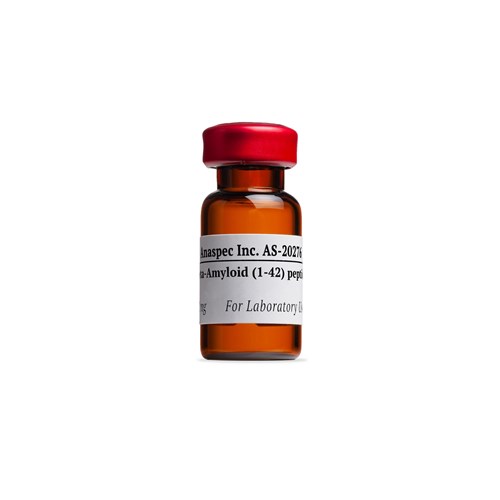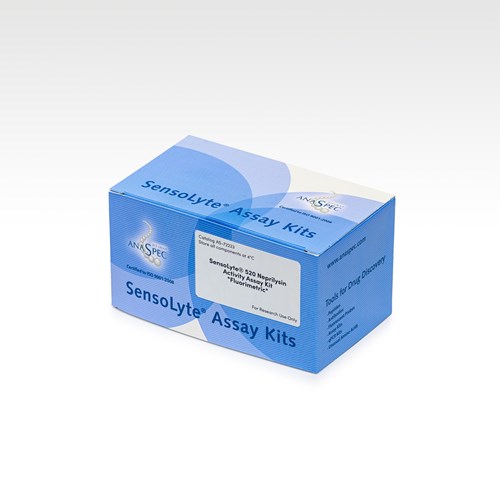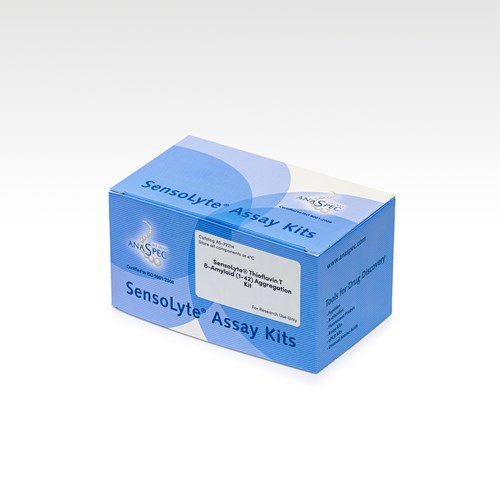Amyloid-Forming Peptide GNNQQNY - 1 mg
- Cat.Number : AS-62762
- Manufacturer Ref. :
-
Availability :
In production
This is a heptapeptide from the N-terminal prion-determining domain of the yeast protein Sup35 that forms amyloid fibrils. The availability of its detailed atomic oligomeric structure makes it a good model for studying the early stage of aggregation. The GNNQQNY dimer forms three stable sheet structures. in-register parallel, off-register parallel, and anti-parallel. The in-register parallel dimer, which is close to the amyloid beta-sheet structure, has few interpeptide hydrogen bonds, making hydrophobic interactions more important and increasing the conformational entropy compared to the anti-parallel sheet.
Specifications
| Chemistry | |
| Sequence one letter code |
|
|---|---|
| Sequence three letter code |
|
| Molecular Formula |
|
| Molecular Mass/ Weight |
|
| Modification | |
| Conjugation |
|
| Quantity & Purity | |
| Purity |
|
| Storage & stability | |
| Form |
|
| Storage Conditions |
|
| Activity | |
| Biomarker Target | |
| Research Area | |
| Sub-category Research Area | |
| Usage |
|
| Source | |
| Source / Species |
|
Downloads
You may also be interested in the following product(s)


SensoLyte® 520 Neprilysin Activity Assay Kit Fluorimetric - 1 kit

SensoLyte® Thioflavin T ß-Amyloid (1-42) Aggregation Kit - 1 kit
Citations
Structure of the cross-β spine of amyloid-like fibrils.
Nature . 2005 Jun 09 ; 435(7043) 773 | DOI : 10.1038/nature03680
- R. Nelson
References
Molecular Dynamics Simulations on the Oligomer-Formation Process of the GNNQQNY Peptide from Yeast Prion Protein Sup35
Biophys J . 2007 Sep 01 ; 93(5) 1484 | DOI : https://doi.org/10.1529/biophysj.106.100537
- Z. Zhang
- et al
Thermodynamics and Kinetics of Aggregation for the GNNQQNY Peptide
J. Am. Chem. Soc. . 2007 Dec 04 ; 129(51) 16005 | DOI : https://doi.org/10.1021/ja075346p
- B. Strodel
- et al
Structural Stability and Dynamics of an Amyloid-Forming Peptide GNNQQNY from the Yeast Prion Sup-35
Biophys. J . 2006 Aug 15 ; 91(3) 824 | DOI : https://doi.org/10.1529/biophysj.106.083246
- J. Zheng
- et al

